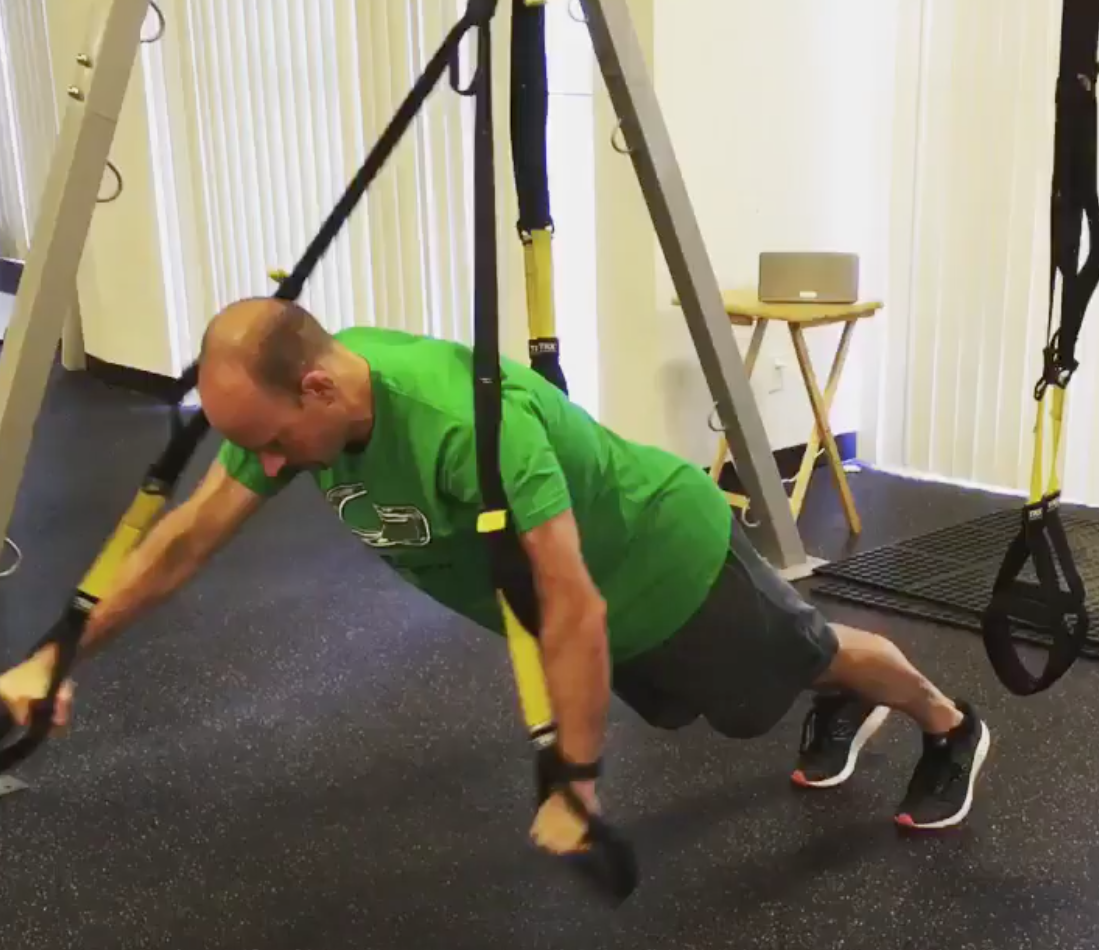
Random Thoughts on Sports Performance Training: Installment 27
I didn’t get a chance to write a February installment of this series, so I’ll do my best to over deliver with an extra few bulletpoints in this March edition.
1. Use video even if you don’t think you need to use video.
A few weeks ago, I decided it was about time I learn how to use iMovie on my iPhone. What better way than to film pieces of my training session and put them all together?
Interestingly, beyond proving that I’d actually entered the 21st century from a technology standpoint, there was an added benefit: I identified some subtle technique issues that I could address. I didn’t like the inconsistent way I unracked the bar from set to set on squats, and I was slipping into more forward head posture than I would have liked on my TRX fallouts. These aren’t epic technical faults, but over time, they’d certainly detract from an optimal training effect. I wouldn’t have known if I hadn’t videoed. And, this is coming from a guy who uses video regularly with his athletes.
On the whole, I think folks video TOO MUCH nowadays. A phone on the training floor is usually a distraction and interferes with the training process. However, used correctly, video can be a tremendous resource – and one I’ll be using more with my own training.
2. Think of assessments as descriptive, not predictive.
There is a ton of research out there on how to predict sports injuries. When it really boils down to it, though, we learn that:
a. the single best predictor of future injuries is a previous injury (duh)
b. predicting injuries is really, really hard
Why is predicting injuries so challenging? Very simply, injury risk is incredibly multifactorial. Injuries occur because of a remarkable interplay of systemic, biomechanical, and physiological factors – and they’re mixed in with pure happenstance: collisions, hit-by-pitches, poor weather conditions, and equipment malfunctions.
As such, it’s challenging to say that any single assessment will ever truly be a gold standard in predicting injuries. Accordingly, we should think of the assessment process as descriptive above all else. In other words, what we see when we first encounter an individual is their “default pattern:” how they’ll respond to a chaotic environment in the real world “fight-or-flight” scenarios.
For example, consider one of my favorite assessments, the overhead lunge walk:
When first challenged with an overhead lunge walk, many athletes dive into knee valgus, use a short stride, and slip into lumbar extension and forward head posture. Sure, we can clean a lot of these things up in a matter of less than 15 seconds, retest, and get a better outcome. That doesn’t fundamentally mean we’ve improved their movement quality or reduced their risk of injury, though. Effecting lasting changes takes time and lots of high-quality reps. However, the descriptive nature of the assessment guides our program design, which gives us a road map for these efforts.
3. Go unilateral to progress anterior core stability drills into rotary stability challenges.
When we categorize our core stability drills, we’ll break them down into the following designations:
a. anterior core (resisting extension of the lower back): rollouts, fallouts, etc.
b. rotary core (resisting rotation of the lower back): chops, lifts, etc.
c. lateral core (resisting lateral flexion – or side bending – of the lower back): 1-arm farmer’s walks, side bridges
With both rotary and lateral core “dominant” exercises, we can appreciate that the anterior core is also working to resist extension as we do a chop, lift, or farmer’s carry. In other words, we’re always controlling the sagittal plane above all else.
However, when we perform anterior core challenges – rollouts, fallouts, bodysaw drills, and basic prone planks/bridges – we really don’t get much of a challenge to rotary or lateral core stability. With four points of contact (two feet/knees and two arms/hands), the challenge outside the sagittal plane is minimal.
Fortunately, we can quickly and easily “bias” our anterior core work to get us additional challenges in the frontal and transverse planes by simply going to unilateral or asymmetrical set-ups. This is one (of many) scenarios where a TRX suspension trainer can be a game-changer. Here are two favorites: the 1-leg TRX fallout and TRX flutters:
4. Coaches need to train.
I don’t compete in powerlifting anymore. Life as a husband, dad, and owner of multiple businesses is hectic enough that competition was pushed out. And, my shoulder doesn’t love back squats these days.
Still, I lift a lot, get out and sprint, do interval training, and even mix in some rec softball and pick-up beach volleyball. This isn’t just because it’s hard-wired into my brain’s perception of a “normal day,” but also because I firmly believe that every training session allows me to evolve as a coach and have more empathy for our athletes.
Understanding how to modify your own training when you’re super busy at work or sick kids kept you up all night gives you an appreciation for how athletes feel when you ask them to get an in-season lift in after a weekend with four games.
Getting in a lift after a late cross-country flight makes you appreciate that it might be a better idea to score an extra few hours of sleep – rather than imposing more fatigue – in the middle of a road trip.
Putting yourself through 8-12 weeks of challenging training with a new program allows you to experiment with new principles to see if there are better methods for serving your athletes.
You don’t get these lessons if you don’t continue to train throughout your professional career. At age 25, I had no idea what our 35-year-old athletes felt like after training sessions. Now I understand it on a personal level – but more importantly, I’m keenly aware that our 45-year-old athletes probably have it even harder, so I need to ask a lot more questions and do a lot more listening in that demographic.
If you’re a strength and conditioning coach, the gym isn’t just where you work; it’s also where you experiment and learn. Don’t miss those opportunities to grow.


